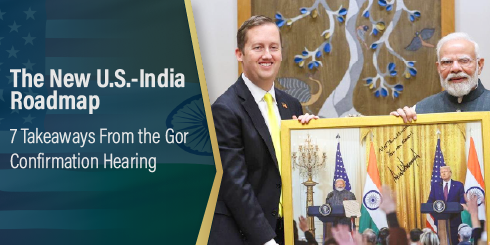India’s Business Hurdles: What Global Companies Must Know
By Hiten Shah, President & CEO – MES
India is frequently hailed as one of the most exciting emerging markets in the global economy. With its youthful population, rapid urbanization, and digital transformation, it presents massive opportunities for companies looking to expand or diversify their global footprint. Boasting the world’s fifth-largest economy and expected to become the third-largest by 2027, India is more than a market—it’s a movement. But what many don’t talk about—and what often catches foreign investors off guard—are the real-world hurdles that come with doing business in India. In this post, I’d like to unpack some of the critical issues that can derail success, based on years of navigating this complex environment.
First and foremost, bureaucracy remains a persistent and underestimated barrier to business success. Although India has made tremendous progress in reforming outdated regulations and creating investor-friendly policies, many businesses still encounter delays and friction once they’re actually on the ground. The process of launching operations can be slowed by overlapping jurisdictions, inconsistent enforcement of laws, licensing ambiguity, and prolonged approval cycles. What appears straightforward on paper is often anything but. The bureaucracy can vary greatly by state, making India feel like 28 different countries instead of one unified market. As I’ve often told teams and partners, succeeding in India doesn’t mean pushing harder—it means learning how to move smarter within the system. Relationships, local knowledge, and long-term thinking are essential.
Another factor that is often overlooked by global executives is the competitive and geopolitical pressure exerted by China. India isn’t just a market—it’s also a battleground, especially in industries like manufacturing, technology, infrastructure, and electronics. China continues to
attract investment due to its mature logistics networks, high manufacturing productivity, and proven export systems. India, while promising, often requires more time to build operational efficiency. This is not simply a business comparison—it’s increasingly a political and strategic
one. As Western countries reevaluate trade dependencies and realign global supply chain strategies to reduce reliance on China, India finds itself positioned as a potential alternative. But replacing China is not a copy-paste operation. The cultural dynamics, infrastructure gaps, and policy differences are significant.
Doing business in India requires a deep understanding of the geopolitical landscape. From shifting trade alliances to localized elections and sudden changes in leadership priorities, India’s political and regulatory environment is highly dynamic. One state’s policy shift—such as
changes to labor laws, environmental clearances, or investment incentives—can affect an entire national supply chain operation. At the same time, ongoing border tensions and global diplomatic plays—particularly with neighboring countries like China and Pakistan—can disrupt
import/export routes or reset market conditions overnight. For businesses entering India, it’s not just about having a market strategy—it’s about having a contingency strategy that accounts for rapid change and political variability.
India’s legal system and regulatory ecosystem also require consideration. While the judiciary is well-established, the pace of dispute resolution remains slow, and contract enforcement is inconsistent. Foreign companies must carefully navigate tax regimes, compliance frameworks, and sector-specific restrictions, many of which differ by state. The introduction of reforms like the Goods and Services Tax (GST) has streamlined some processes, but the ground reality is
that many organizations still struggle to stay aligned with frequent policy updates and shifting regulatory interpretations.
The infrastructure in India is improving but still lags behind many global competitors. Industrial parks, highways, logistics hubs, and digital infrastructure are unevenly developed across regions. Major metros like Mumbai, Bangalore, and Delhi offer more robust ecosystems for B2B
operations, but companies looking to scale into tier 2 and tier 3 cities often face power reliability issues, water access challenges, and connectivity limitations. This makes site selection and supply chain planning especially critical in the Indian context.
The key takeaway is this: don’t be seduced by scale alone. India is a vibrant, high-growth market with over 1.4 billion people and a rising middle class, but success demands preparation, agility, and cultural intelligence. Many companies fall short not because they lack ambition—but
because they underestimate the nuances. India is not a plug-and-play market. What works in the U.S., China, or Europe won’t automatically translate. You need local partnerships, you need to commit to the long term, and you must tailor your business models to the regional environment. India rewards commitment—but punishes short-term thinking.
As a company that’s operated globally for decades, MES continues to see immense potential in India, but we approach it with eyes wide open. We don’t just ask “how do we grow here?”—we ask, “how do we grow here sustainably, intelligently, and with respect for the local environment
and culture?” Success requires a clear go-to-market strategy, experienced local partners, scalable infrastructure, and most importantly—a mindset rooted in flexibility.
India’s strength lies in its innovation, entrepreneurial energy, and rapidly digitizing economy. The government’s Make in India and Digital India initiatives are attracting billions in foreign direct investment (FDI), especially in sectors like electronics, pharmaceuticals, automotive, renewable energy, and IT services. But every foreign investor needs to evaluate the cost of compliance, time to market, and operational resilience before making large-scale investments. The most successful companies in India are those who understand how to align global strategy with local
execution.
If you’re considering expansion into India or reevaluating your global sourcing strategy, the most important step you can take is to educate yourself on the realities behind the headlines. The opportunity is real—but so are the hurdles. And those who are prepared, flexible, and locally
embedded will be the ones who lead.
Watch the full video from Hiten Shah https://vimeo.com/1089146846
Contact MES for an India market strategy consultation




